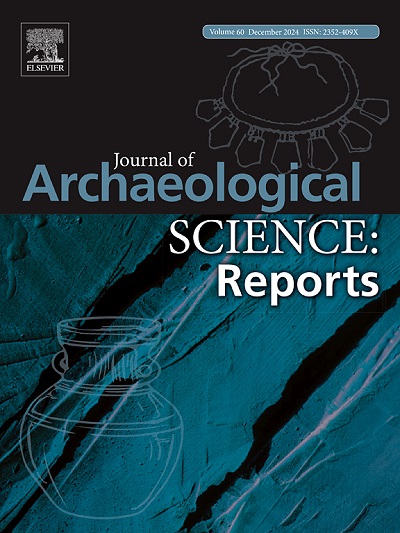喀尔巴阡山盆地铜器时代铜金属加工的开端--关于匈牙利西部和中部铜器时代早期和中期铜器发现来源的新数据
IF 1.5
2区 历史学
0 ARCHAEOLOGY
引用次数: 0
摘要
喀尔巴阡盆地对冶金技术在欧洲的传播起到了至关重要的作用。此外,该地区在铜时代早期和中期(公元前4500-3700 cal)发现了丰富的铜,这说明了该地区的重要性。在类型学的基础上,大匈牙利平原与东南欧冶金圈相连,而外多瑙河与中欧冶金圈相连,从而形成了两个地区之间必不可少的联系。通过对来自外多瑙河和匈牙利中部的早期和中期铜时代铜制品进行铅同位素和化学成分分析,研究了铜制品原材料的来源。这些遗址的年代是通过放射性碳定年法测定的。当地金属加工的最早证据是在早期铜器时代的材料中被确定为tuy本文章由计算机程序翻译,如有差异,请以英文原文为准。
The beginning of copper metalworking in the Copper Age of the Carpathian Basin – New data on the provenance of Early and Middle Copper Age copper finds from Western and Central Hungary
The Carpathian Basin played a crucial role in spreading metallurgical technology across Europe. Furthermore, the significance of the region is exemplified by its abundant copper finds in the Early and Middle Copper Age (4500–3700 cal BCE). On a typological basis, the Great Hungarian Plain was linked to the Southeastern European metallurgical circle, while Transdanubia was linked to the Central European metallurgical circle, thus forming an essential link between the two areas. The provenance of the raw material of the copper artefacts was investigated through lead isotope and chemical composition analyses performed on Early and Middle Copper Age copper artefacts from Transdanubia and Central Hungary. The sites were dated through the use of radiocarbon dating. The earliest evidence of local metalworking was identified in Early Copper Age material as tuyères. Artefacts typologically related to the Central European metallurgical circle – specifically, copper discs and spectacle spiral pendants – were manufactured from raw materials sourced from the Northwestern Carpathians. The slag remnants discovered within a Middle Copper Age crucible also originated from this region. During the Middle Copper Age, the use of flat axes crafted from arsenical copper emerged. In addition to the Northwestern Carpathians, the possible exploitation of ore deposits in Northeastern Hungary and the Bihor region has also been proposed.
求助全文
通过发布文献求助,成功后即可免费获取论文全文。
去求助
来源期刊

Journal of Archaeological Science-Reports
ARCHAEOLOGY-
CiteScore
3.10
自引率
12.50%
发文量
405
期刊介绍:
Journal of Archaeological Science: Reports is aimed at archaeologists and scientists engaged with the application of scientific techniques and methodologies to all areas of archaeology. The journal focuses on the results of the application of scientific methods to archaeological problems and debates. It will provide a forum for reviews and scientific debate of issues in scientific archaeology and their impact in the wider subject. Journal of Archaeological Science: Reports will publish papers of excellent archaeological science, with regional or wider interest. This will include case studies, reviews and short papers where an established scientific technique sheds light on archaeological questions and debates.
 求助内容:
求助内容: 应助结果提醒方式:
应助结果提醒方式:


